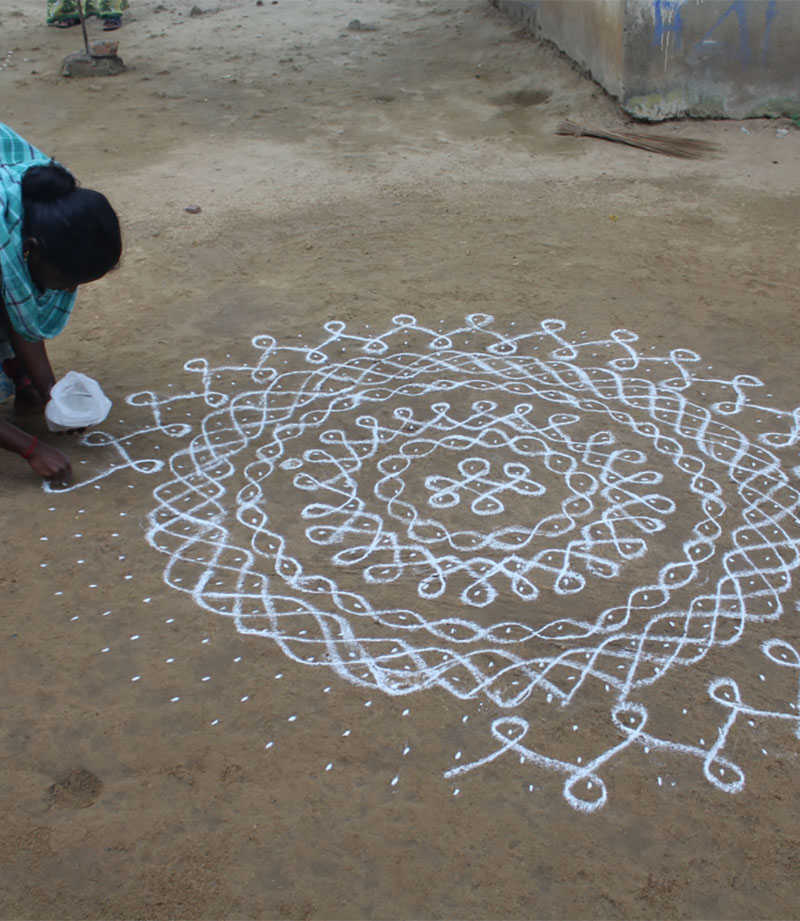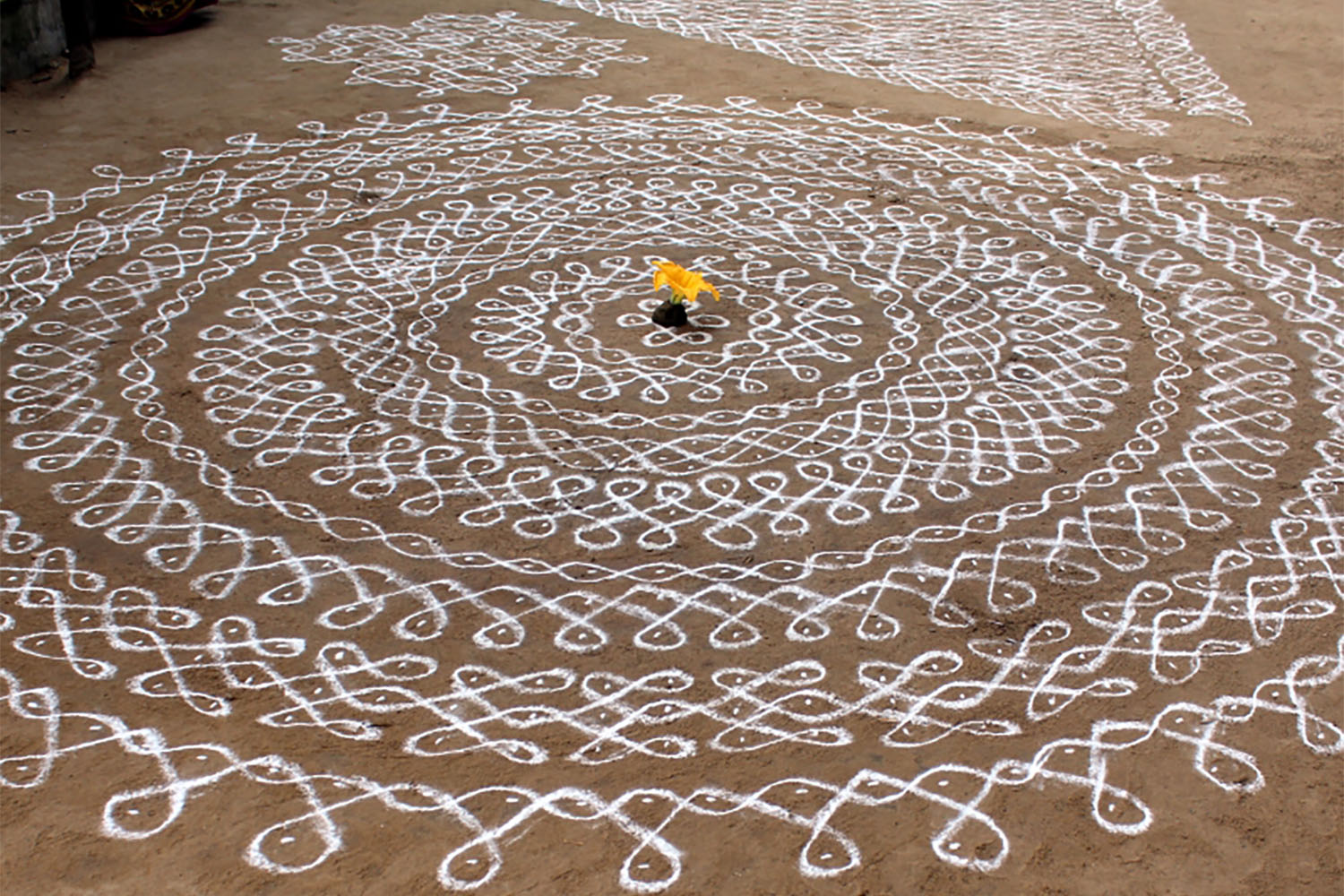A decorative floor design originating in Tamil Nadu, kolam is created traditionally with dry or wet rice flour and the designs are often geometric or based on a grid of dots. Kolam translates to “form” or “beauty” in Tamil and the earliest usage of the word as a form of decorative floor art is mentioned in texts such as the Madurai Meenatchiammai Kuram and Thiru Kutraala Kuravanji, dating to the sixteenth and seventeenth centuries respectively. The kolam is considered to be an invitation to the goddess Lakshmi, associated with wealth and prosperity; it is also believed to ward off the goddess Moodevi, a symbol of misfortune. The drawing of the kolam is a daily ritual that is taken up by the women of the house, before the break of dawn.
The foundation of most kolam designs is a grid of dots, known as pulli. The designs created based on this matrix may be classified into two kinds — one where the lines loop around the dots, known as kambi kolam and another where the lines connect the dots in a particular pattern, known simply as pulli kolam. Within kambi kolams all lines must be drawn as closed loops. In designs where curved lines are drawn around the dots, it is known as chikku or sikku kolam. Even within pulli kolams, based on the lines used to connect the dots, designs may further be categorised as neli (curve) kolam, kodu (tessellated) kolam, woda pulli (a looped kolam with hexagonally packed dots) kolam or ner pulli (looped kolam with square-packed dots).
According to scholars, kolam consists of the six categories of mathematical skills: counting, locating (identifying), measuring, designing, playing (experimenting) and explaining. For the women who practice the art of kolam, the designs are either passed on through generations or are created by experimenting with the permutations of dots and lines. The thickness and number of lines used to make the design may also vary based on how elaborate the kolam is.
The ritual of drawing the kolam daily normally begins with sprinkling the ground or the surface with a mixture of cow-dung and water, making the surface damp for the rice flour to adhere to. The dry powder is pinched between the thumb and forefinger and sprinkled to create lines and dots that form the design. The use of rice flour is also beneficial for ants, birds and other small creatures to feed on. The dry rice flour may sometimes be replaced by chalk, limestone or powdered stone. In the case of the wet rice flour, a small piece of paper or cloth is dipped in it and squeezed between the middle and forefinger, and thumb, allowing the rice flour paste to run freely through the fingers which then act as nibs used for the drawing, known as makolam. The designs created with the wet paste last longer than the ones with the dry flour, though the ephemeral nature of the kolam, meant to disappear within the day, is a part of the ritual of kolam making. For special occasions, the white design of the kolam may be further accentuated by a red paste, made out of crushed red brick, known as kaavi.









